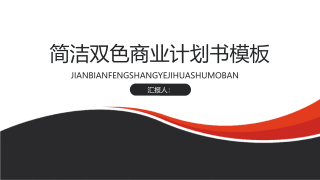产业驱动城市群空间组织演化研究——以长三角城市群为例
VIP免费
浙江财经学院硕士学位论文
I
摘 要
产业对城市群空间组织的驱动作用主要是通过产业集聚和产业扩散运动实现
的。城市群空间组织是群内各要素自组织和他组织耦合作用的结果,包含了城市
群空间形态、城市规模等级等结构的演化,以及在空间结构基础上形成的职能分
工转换。城市群空间组织研究是一个复杂的命题,可能涉及到不同的要素主体。
从产业驱动的角度考虑,表现为产业集聚、扩散对空间形态特征、城市规模等级、
职能分工体系的影响。本文的研究为城市群空间结构优化和产业升级转型,区域
一体化发展等方面提供了新的理论支撑,同时,对长三角城市群空间效率的提高、
城市化与产业发展关系的协调、专业化生产体系的构建等方面的政策制定提供参
考。
本文的研究设计总体上按照文献综述、理论分析、实证检验三个层次依次展
开。在对国内外研究成果梳理的基础上,概括出已有研究的不足及可能改进的方
向,以期在本文研究中取得进展。理论分析部分,从产业经济学角度出发,以空
间经济学和城市地理学为基础,通过数理模型和规范分析的结合,探讨产业集聚、
扩散推动下城市群空间组织机制及内在规律。实证部分,本文以长三角城市群22
个城市为对象,在Ucinet、GeoDa等软件的支持下,结合多种分析方法考察了产业
集聚、扩散与长三角城市群空间组织过程的互动,并对理论分析部分中提出的一
般性规律进行验证。本文研究的主要结论如下:
(1)城市群空间形态的呈现依托于产业在空间的分布与运动。产业集聚带来
了极核城市的产生,极核城市之间的经济往来以及产业沿交通、通信、动力供给
路线的扩散使得轴线周边城市得以发展,形成城市群轴带结构、圈层结构。创新
的科技,便捷的通信使得城市群内产业的发展对区位的依赖性减弱,极核城市之
间联系日益紧密,轴带纵横交错,圈层凸显,在空间上呈现出网络形态。
(2)不同价格指数效应的产业在区域内的集聚、扩散运动促使城市群等级规
模体系的形成。城市群内产业扩散存在结构性特征。价格指数效应高的产业往往
会集聚于中心城市,而价格指数效应低的产业将逐渐扩散到规模相对较小的城市,
价格指数效应越低,该产业最终的聚集城市规模也越小。
(3)地区内的劳动力、资本等禀赋条件决定了该地区在整个区域的比较优势,
而比较优势又决定了该区域所应该从事的经济活动,即每个地区应该从事密集使
用其丰裕要素的产业。城市职能会因产业集聚得到强化,职能分工体系的转换优
化是通过产业扩散实现的。
浙江财经学院硕士学位论文
II
本文的创新之处在于:(1)以产业空间运动为切入点,同时考虑了产业集聚
与产业扩散两种产业行为对城市群空间组织的影响,总结出城市群空间组织的产
业驱动机理。(2)实证部分结合多种方法验证理论分析。其中笔者将社会网络分
析法引入本文的研究,构建了基于产业联系的城市群空间形态分析模型,通过量
化指标更为直观地揭示出长三角城市群空间形态演化过程和特征。
关键词:产业集聚;产业扩散;空间组织;空间形态;城市职能
浙江财经学院硕士学位论文
III
ABSTRACT
Spatial organization of urban clusters is a process of coupling effect resulted from
various factors in the self-organization and other organizations, including grading of
urban size in urban clusters, characteristics of spatial pattern in the evolution of the
structure, and the transformation in function division based on space structure. The
research of urban agglomeration spatial organization is a complicated problem, there
may involve elements subject. From the perspective of industry, structure and space will
be the two key elements which reflect the relationship between evolution of urban
agglomeration and development of industry, which can be observed in the reflect of
industrial concentration and diffusion in urban scale level and spatial characteristics and
the function division system. This paper provides a new theoretic support for the
optimization of urban agglomeration spatial structure, the upgrading of the industrial
transformation and development of regional integration. On the other side, it also offers
some suggestion about policy making as for the increase of urban agglomeration spatial
efficiency in the Yangtze River Delta, the coordination of urbanization and industrial
development, and the construction of production specialization.
There are three significant sections in this paper: the review of theory and literature,
theoretical analysis and empirical study. We expect to conclude the shortage of the
present research and possible improvement, and then make a progress in this paper,
which is based on the study in domestic and abroad research. As for theoretical research,
this paper discusses the mechanism of urban agglomeration spatial organization and
inherent law driven by industrial concentration and diffusion through the combination
of the mathematical model and normative analysis, which is from industrial economics
perspective and based on spatial economy and city geography. In empirical study, we
choose the 22 cities in urban clusters of Yangtze river delta as the experiment object and
make advantage of some software as Ucinet, GeoDa to study the interaction between the
industrial concentration (diffusion) and urban agglomeration spatial organization with a
variety of analysis method. This paper also examines the validity of the proposition put
by our theory analysis. The conclusions of this paper are as follow:
1. The observation in urban agglomeration spatial pattern depends on the spatial
浙江财经学院硕士学位论文
IV
distribution and movement. The economic transactions and the diffusion of industry in
traffic, communication and power supply among the polar nucleus cities which are
caused by industrial concentration, which make a contribution to the formation of urban
agglomeration shaft structure and layer structures. Innovation of technology and
convenient communication make the dependence in the development of the industry to
location lower and the relationship among polar nucleus cities increasingly closer, shafts
crisscrossing, layers highlighting and present a network form in space.
2. The formation of urban agglomeration level scale system is caused by the
concentration and diffusion in industries which have different price index effect. And
there exist structural characteristics in urban clusters diffusion. The industry with higher
price effect will concentrate in the central cities while the lower will diffuse to the
relatively small city in scale, and the lower price effect is, the smaller scale of city is.
3. The economic transactions in region are depending on comparative advantages
which are decided by endowment such as labor and capital, i.e. each region should
engage in the industry which used the relatively affluent elements. The function of city
will be strengthened due to industrial concentration. And the optimization in division of
labor system can be acquired by industrial diffusion.
Keywords: industrial cluster;industrial disperse;spatial organization;spatial pattern;
urban function
浙江财经学院硕士学位论文
V
目 录
第一章 导论 .................................................................................................................. 1
第一节 选题背景与研究意义...................................................................................................1
第二节 研究思路、内容与方法...............................................................................................4
第三节 重点难点及可能的创新点...........................................................................................7
第二章 文献综述 .......................................................................................................... 8
第一节 相关概念辨析...............................................................................................................8
第二节 国内外研究进展...........................................................................................................9
第三章 产业驱动城市群空间组织演化—理论分析................................................ 16
第一节 城市群空间结构形成及演变—基于新经济地理学模型的分析 .............................16
第二节 城市群职能分工形成及转换—基于劳动地域分工理论的分析 .............................22
第四章 产业驱动下的长三角城市群空间形态演变及特征.................................... 28
第一节 基于产业联系的城市群空间形态分析模型构建.....................................................28
第二节 长三角城市群产业联系网络分析.............................................................................31
第三节 长三角城市群空间形态特征.....................................................................................38
第五章 产业驱动下的长三角城市群规模等级结构演化........................................ 42
第一节 产业集聚与城市群规模结构的互动.........................................................................42
第二节 长三角城市群产业扩散的结构特征.........................................................................43
第六章 产业驱动下的长三角城市群职能分工转换................................................ 49
第一节 2003 年长三角城市群职能分工体系........................................................................51
第二节 2010 年长三角城市群职能分工体系........................................................................53
第三节 结论及比较.................................................................................................................56
主要结论与政策建议 .................................................................................................... 61
参考文献 ........................................................................................................................ 65
附 录.............................................................................................................................. 70
致 谢.............................................................................................................................. 77
浙江财经学院硕士学位论文
1
第一章 导论
第一节选题背景与研究意义
一、选题背景
城市是组织现代经济的中心,在新的全球化时代背景下,城市的作用已变得
尤为重要,城市之间的竞争与互动关系愈趋复杂。区域之间的竞争不仅表现为单
个城市的竞争,更多的是以核心城市为中心的城市集团或城市群的竞争。以大城
市为核心,若干空间距离相近、经济联系紧密的城市共同构成的城市群成为一种
具有全球意义的空间组合模式,是区域发展的一大特色。中国的长江三角洲、珠
江三角洲、京津地区已经形成了引人注目的城市群经济现象。城市群作为城市发
展演进的高级阶段,是集聚与扩散共同作用的产物。城市群也日益成为国家最具有
活力和魅力的区域及国际竞争的基本单位 ①。作为一个系统,城市群最主要的构成
要素就是产业和城市,两者之间存在千丝万缕的联系,系统整体效应的发挥需要
各要素的协调。产业在空间上的运动对于城市群空间组织影响的机制何在?这一
动态变化对城市群空间组织的影响是否有一定的模式可循?产业集聚、扩散与城
市群空间组织于统计学意义上的相关性又是如何?显然,产业的结构、布局对于
城市群空间组织的影响值得深入研究,而事实上此类问题也是产业经济学、城市
地理学等学科的关注重点。
长三角城市群,即通常所说的“小长三角”,作为中国最大的城市群坐落于沿
江沿海“T”字带,它由沿江城市带和杭州湾城市群构成。2010 年之前,长三角城
市群包括上海、南京、苏州、无锡、常州、镇江、扬州、南通、泰州、杭州、宁
波、嘉兴、湖州、绍兴、舟山、台州 16 个城市。2010 年3月在浙江嘉兴召开的长
三角城市经济协调会第十次市长联席会议宣布,将长三角核心城市群扩容,吸收
盐城、淮安、金华、衢州、合肥、马鞍山“加盟”,使“长三角”突破自然地理界
线,成为真正意义上的经济区概念。本文所讨论的长三角城市群包含扩容的 6个
城市,是由 22 个城市组成的区域(图 1-1)。
① 周牧之. 城市圈:中国 21 世纪城市化战略的引擎[J]. 现代城市研究,2001,(02):3-6.
摘要:
展开>>
收起<<
浙江财经学院硕士学位论文I摘要产业对城市群空间组织的驱动作用主要是通过产业集聚和产业扩散运动实现的。城市群空间组织是群内各要素自组织和他组织耦合作用的结果,包含了城市群空间形态、城市规模等级等结构的演化,以及在空间结构基础上形成的职能分工转换。城市群空间组织研究是一个复杂的命题,可能涉及到不同的要素主体。从产业驱动的角度考虑,表现为产业集聚、扩散对空间形态特征、城市规模等级、职能分工体系的影响。本文的研究为城市群空间结构优化和产业升级转型,区域一体化发展等方面提供了新的理论支撑,同时,对长三角城市群空间效率的提高、城市化与产业发展关系的协调、专业化生产体系的构建等方面的政策制定提供参考。本文的...
相关推荐
-
建筑工程投标文件范本-(格式)VIP免费
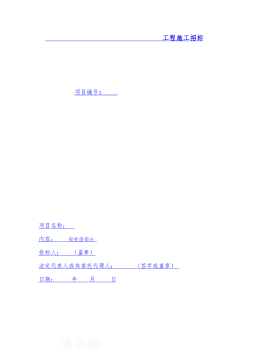
 2024-11-22 17
2024-11-22 17 -
幕墙工程施工组织设计方案VIP免费
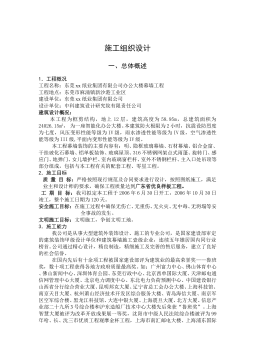
 2025-01-09 6
2025-01-09 6 -
建筑商品砼生产项目创业计划书VIP免费
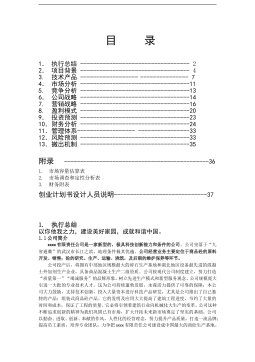
 2025-01-09 10
2025-01-09 10 -
建筑工程商业计划书模板VIP免费
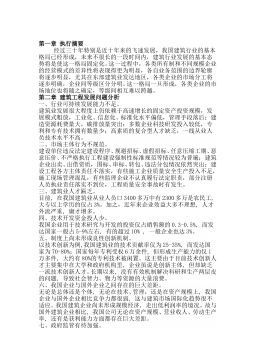
 2025-01-09 8
2025-01-09 8 -
工程项目施工计划书VIP免费
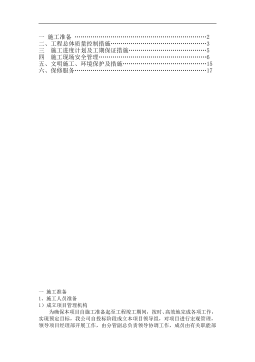
 2025-01-09 6
2025-01-09 6 -
《专业型文档》建筑企业计划书VIP免费
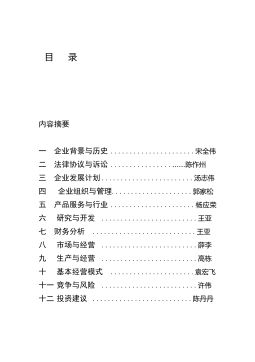
 2025-01-09 8
2025-01-09 8 -
xx水库灌区管道工程水工图纸C1VIP免费

 2025-01-09 13
2025-01-09 13 -
邮政区域仓储配送中心VIP免费
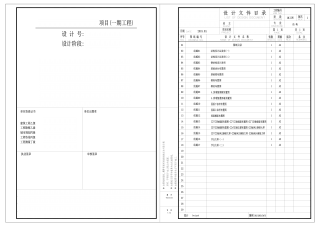
 2025-01-09 8
2025-01-09 8 -
疾病预防控制中心招标文件VIP免费
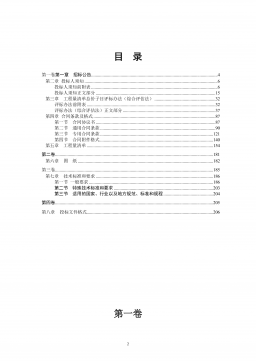
 2025-01-09 13
2025-01-09 13 -
体育健身中心施工招标文件VIP免费
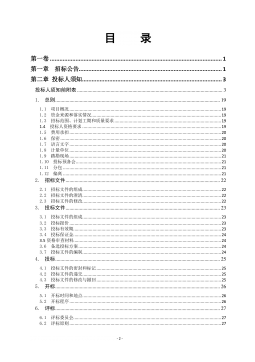
 2025-01-09 10
2025-01-09 10
作者:周伟光
分类:高等教育资料
价格:15积分
属性:74 页
大小:1.16MB
格式:PDF
时间:2024-09-29


